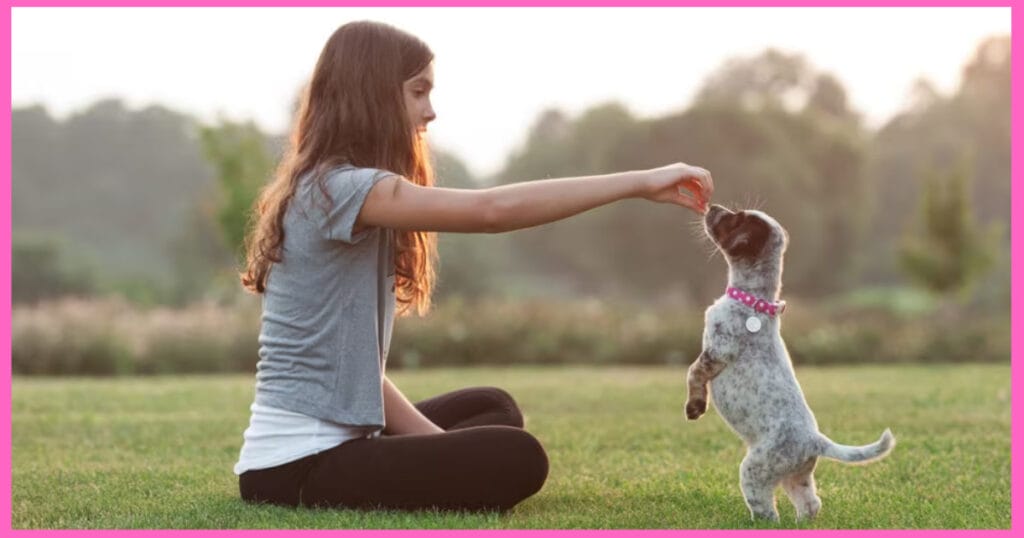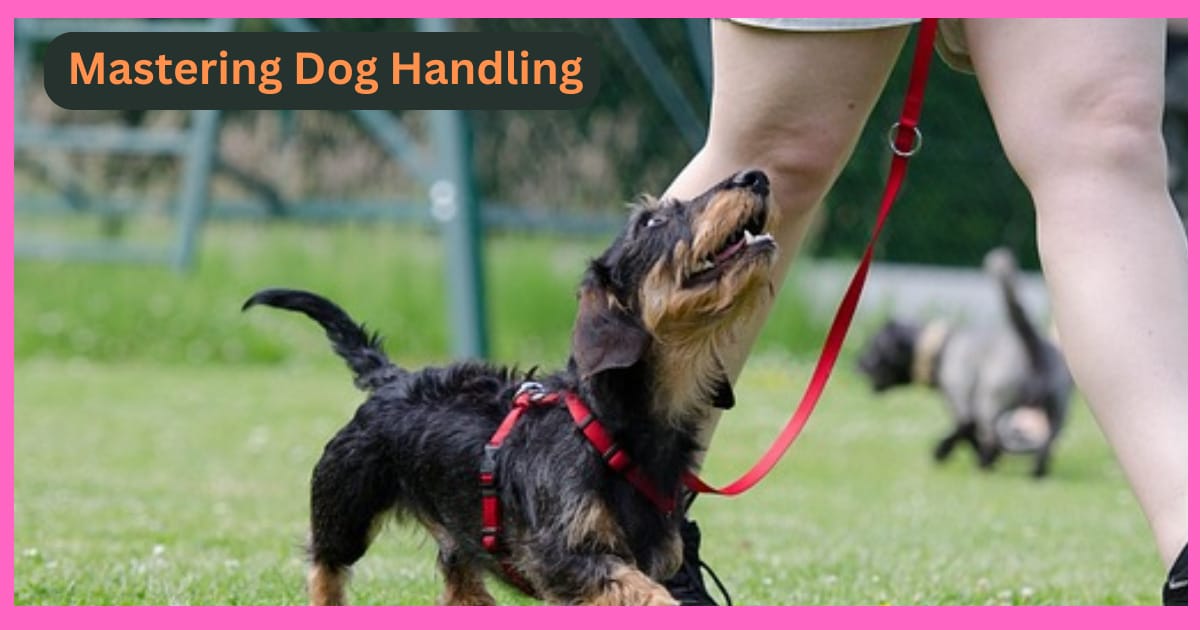Welcoming a furry friend into your home can be one of life’s most rewarding experiences. However, effective dog handling is crucial to ensure a harmonious relationship between you and your canine companion. In this guide, we’ll explore the essentials of dog handling, covering topics from basic commands to understanding canine body language

Building a Strong Foundation:
It is highly recommended to build the strong foundations when you are going to keep the dogs in your home.
1. Establishing Leadership:
Dogs are pack animals and thrive when there’s a clear leader. As a pet owner, it’s essential to establish yourself as the pack leader. This doesn’t mean dominating your dog, but rather providing consistent rules and boundaries.
2. Basic Training Commands:
Teaching your dog basic commands like sit, stay, and come is fundamental. Use positive reinforcement techniques, such as treats or praise, to reward good behavior. Consistency is key – practice these commands regularly in different environments to reinforce learning.
Effective Communication:
You have to understand your dog by following ways.
1. Understanding Canine Body Language:
Dogs communicate primarily through body language. Learn to interpret your dog’s signals, including tail wagging, ear positioning, and overall posture. This understanding will help you respond appropriately and strengthen your bond.
2. Consistent Verbal Cues:
Associate consistent verbal cues with actions. Dogs respond well to a clear, firm, and positive tone. Use simple, one-word commands and avoid confusing language. For example, use “sit” instead of “sit down” to prevent confusion.
Socialization:
You must have to be very social with your dog.
1. Early Socialization:
Expose your dog to various environments, people, and other animals from an early age. This helps prevent behavioral issues and ensures your dog is comfortable in different situations. Puppy socialization classes can be an excellent way to achieve this.
2. Positive Encounters:
Encourage positive interactions with other dogs. Use controlled introductions, rewarding good behavior with treats or praise. This will help your dog build positive associations with new friends.
Handling Specific Situations:
You have to handle many situations when your dog is agressive or fearful.
1. Handling Aggression:
If your dog displays aggressive behavior, it’s crucial to address it promptly. Consult a professional dog trainer or behaviorist to determine the underlying cause and implement a tailored training plan. Avoid punishment, as it can exacerbate aggression.
2. Dealing with Fear:
Dogs may develop fear in response to specific stimuli. Gradual exposure to these triggers, coupled with positive reinforcement, can help desensitize your dog. Patience and a gentle approach are key in helping your furry friend overcome their fears.
Physical Care:
Also be careful dog’s physical care and protection.
1. Grooming and Hygiene:
Regular grooming is essential for your dog’s health and well-being. Brush your dog’s coat to prevent matting, trim nails to a proper length, and clean ears regularly. This not only maintains your dog’s physical health but also strengthens the bond between you.
2. Veterinary Care:
Schedule regular veterinary check-ups to monitor your dog’s overall health. Keep vaccinations up to date, administer preventive medications, and address any health concerns promptly. A healthy dog is a happy dog.
Exercising and Mental Stimulation:
This is very important step to train your dog well human loving and fresh with peace of the mind.
1. Regular Exercise:
Dogs, regardless of size or breed, require regular exercise to stay physically and mentally healthy. Daily walks, playtime, and interactive toys are excellent ways to keep your dog engaged and prevent boredom.

2. Mental Stimulation:
Challenge your dog’s mind with puzzle toys, obedience training, and new experiences. Mental stimulation is as important as physical exercise and can prevent behavioral issues associated with boredom.
Leash Training:
The leash training is very important to handle a dog in a safe ways. For this leash training training you must follow these steps.
1. Loose Leash Walking:
Teaching your dog to walk on a loose leash is essential for enjoyable walks. Use positive reinforcement to reward your dog for walking beside you without pulling. Consistency is crucial in reinforcing this behavior.
2. Addressing Pulling Behavior:
If your dog tends to pull on the leash, consider using a no-pull harness or head halter. These tools provide more control while allowing you to redirect your dog’s attention and reward them for walking nicely.
Traveling with Your Dog:
Make your dog getting a good habbit to travel with you and it will be human freindly and safe.
1. Car Safety:
When traveling by car, secure your dog using a seatbelt harness or a well-ventilated crate. This ensures their safety and prevents distractions while driving. Familiarize your dog with short rides before embarking on longer journeys.
2. Accommodations:
If you plan to stay overnight at a hotel or vacation rental, ensure that the accommodation is pet-friendly. Bring familiar items like your dog’s bed, toys, and food to create a comfortable environment.
Conclusion:
Mastering dog handling requires patience, consistency, and a deep understanding of your canine companion. By building a strong foundation, communicating effectively, and addressing specific situations with care, you can create a positive and fulfilling relationship with your dog. Remember, every dog is unique, so tailor your approach to suit their individual needs, and enjoy the incredible journey of companionship that comes with being a dog owner.
